INTERVIEW
Yuko Nagayama (Architect) Expressions revealed through the use of light control technology
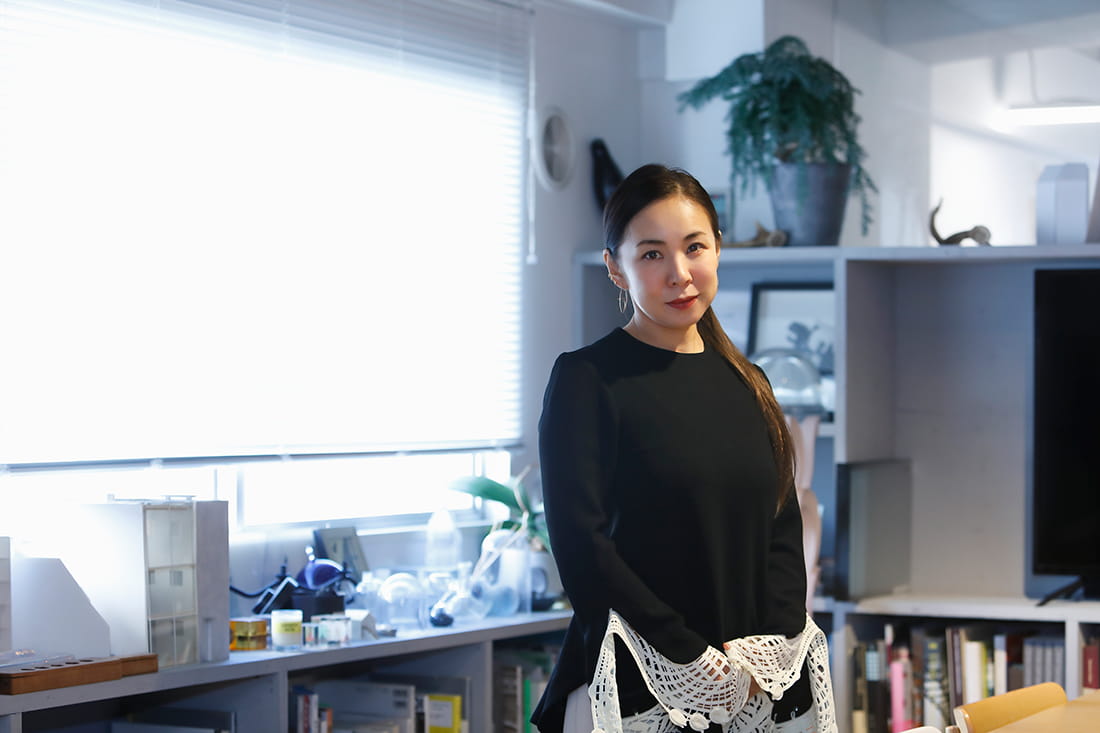
Photo by Takayuki Abe
The work of architect Yuko Nagayama spans a wide range of sectors, from residential developments to commercial facilities. Her projects include the Dubai Expo 2020 Japan Pavilion, the lower section of the Tokyo Torch skyscraper, and the exterior design of Tokyu Kabukicho Tower, a project developed as part of the National Strategic Special Zones program. One of Nagayama’s early projects, the facade design for Louis Vuitton Kyoto Daimaru, drew on her unique perspective and background, which includes the influence of her father, a biophysicist, and a familiarity with polarizing films, developed through play with science kits in her childhood.
Referencing the vertical latticework of Kyoto townhouses and a pattern on an old Louis Vuitton trunk, she used polarizing plates to create an eye-catching vertical lattice with no discernible thickness. This was followed by works with architectural dynamism and intelligent details, weaving together unique ideas and beautiful expressions in a fascinating manner. Picking up a RAYCREA prototype, she began sharing some interesting ideas for signage.
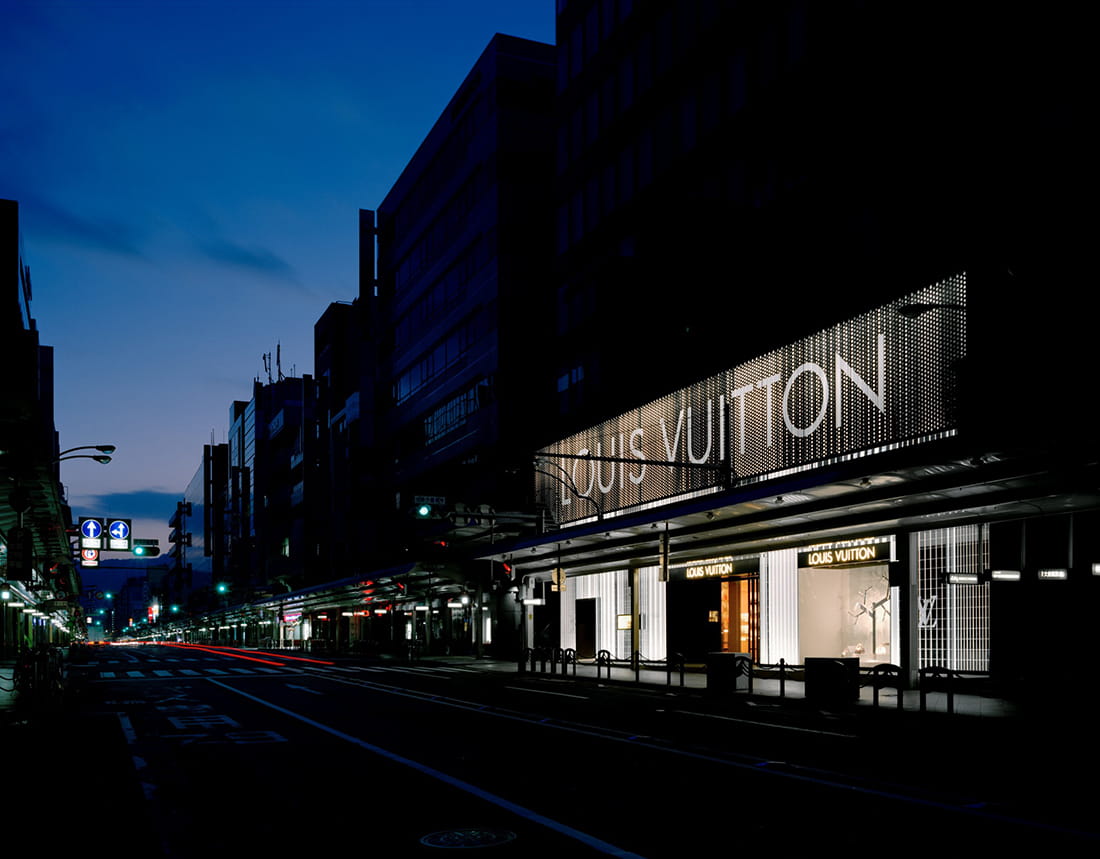

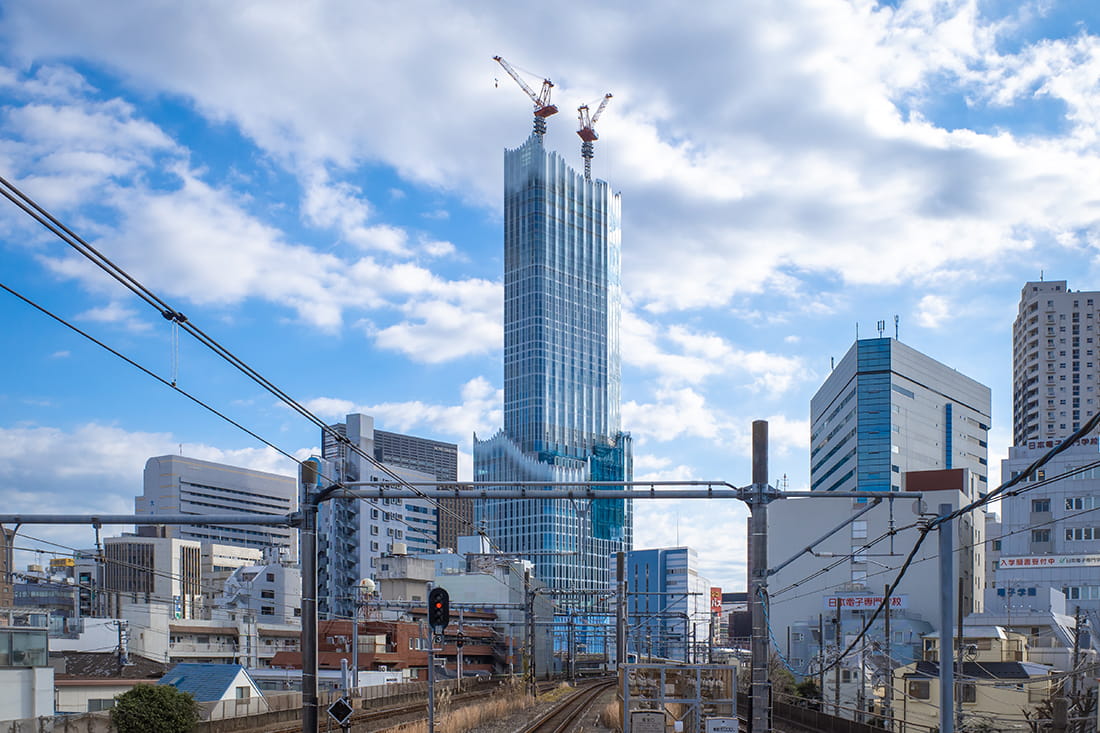
New signage designs made possible by controlling the light
“I used glass for the main sign at the Dubai Expo 2020 Japan Pavilion, but it would have been great to use RAYCREA instead. The letters were positioned inside the glass, so they appeared back to front when viewed from behind. This is an issue I've been wanting to solve for some time and by using RAYCREA, the letters could be visible from the front but transparent from behind. The film controls the angle of the light, allowing you to convey information in a certain direction.”
Nagayama would also like to use RAYCREA for indoor and outdoor signage for public and commercial facilities. Signage plays an important role in expansive, multi-layered facilities, where it can be difficult to create signs visible to pedestrians approaching from all directions. Drawing on RAYCREA's features, it may be possible to convey information specifically to people approaching from a certain direction. However, Nagayama believes that while RAYCREA can create some interesting facade expressions, there will also be challenges in meeting the demands of the external environment.
"Creating an architectural exterior involves overcoming more challenges than you could ever imagine. When using RAYCREA outside, I can envisage challenges such as durability and resistance to wind, rain, and ultraviolet rays. I'm sure you're already considering these issues, so I look forward to seeing external use become possible in the future.”
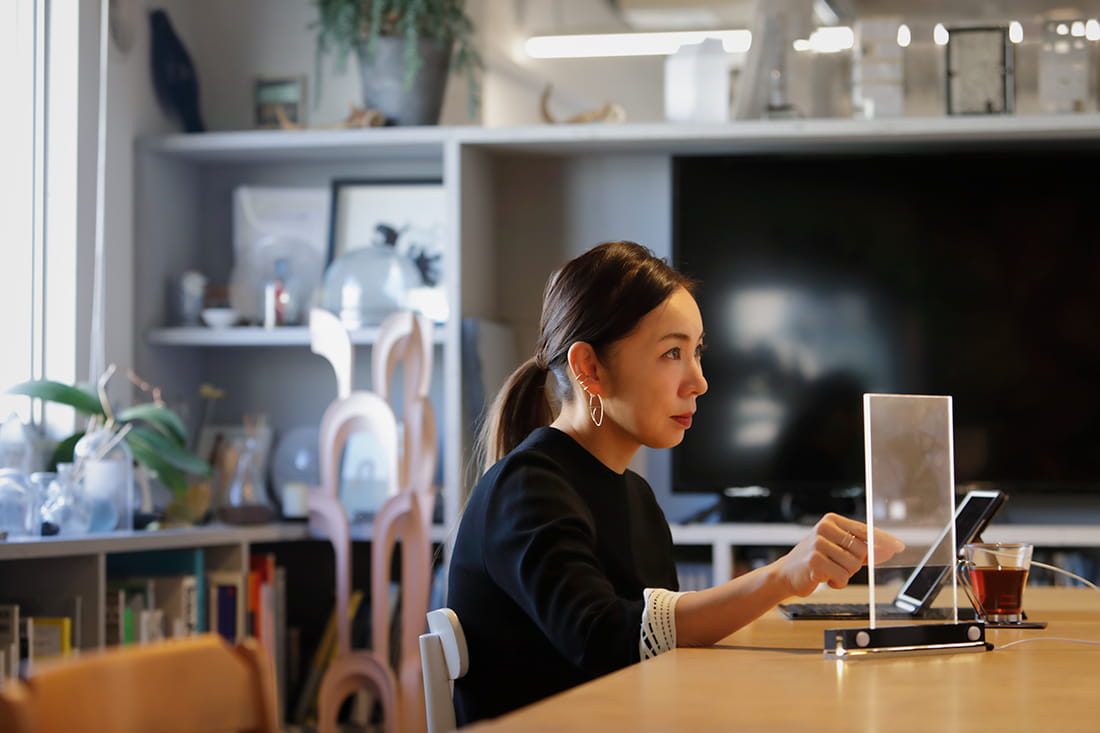
Photo by Takayuki Abe
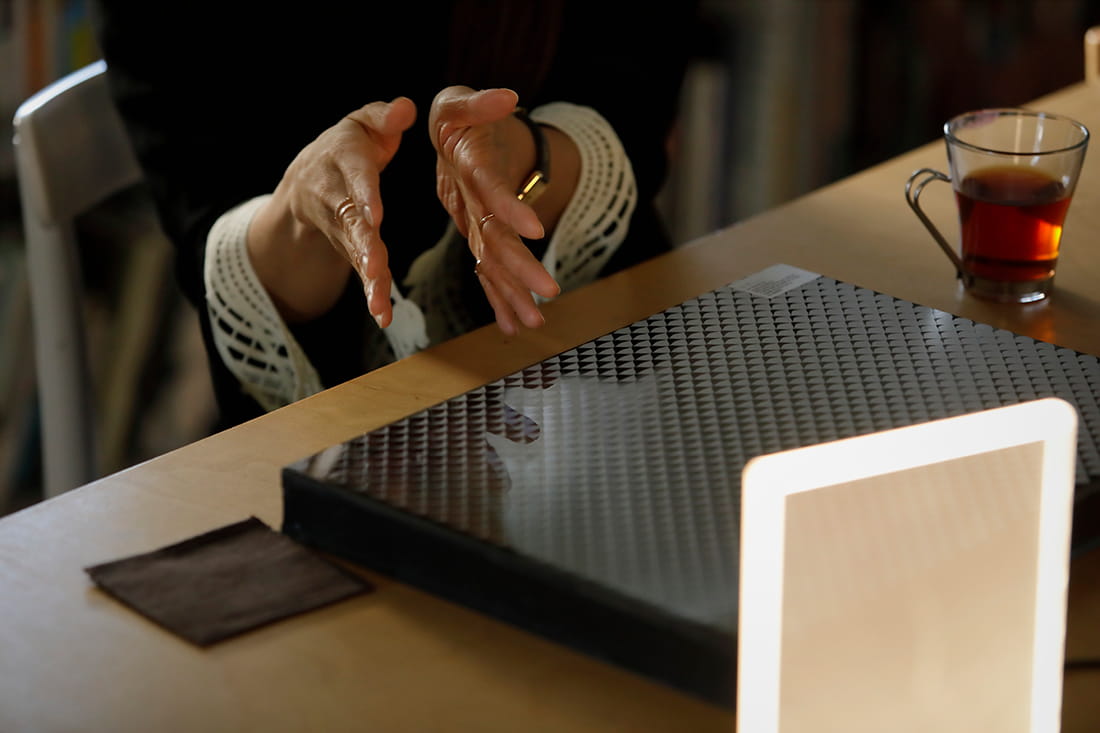
Photo by Takayuki Abe
Architectural possibilities, interior possibilities
Nagayama overcame challenges while working on the exterior design of Tokyu Kabukicho Tower, such as printing a graphic pattern on the outer surface of double-glazed glass.
"Tokyu Kabukicho Tower’s graphic pattern would have been unrecognizable due to the reflection in the glass, so I had to tune the light output. Overcoming these kinds of problems and challenges allows architecture to become reality. By using LED, RAYCREA can take on various colors and by changing their hues and gradations, you can change the atmosphere of a space. It would be interesting to print dots on the film and layer different patterns together."
She continues by highlighting RAYCREA's imminent use in fixtures and interiors.
"While there are significant barriers to overcome for external use in architecture, fixtures and interiors provide a range of opportunities. For example, if you apply RAYCREA to a glass shelf, the shelf will appear transparent while illuminating the objects placed below. Nitto's exhibition in Milan presented the light itself, but it's also possible to think the other way around, starting with the idea of illuminating objects. At first glance it's hard to understand the source of the light, which can create a sense of surprise. Under-shelf lighting often comes with the challenge of organizing cables neatly, which is something that RAYCREA can solve.”
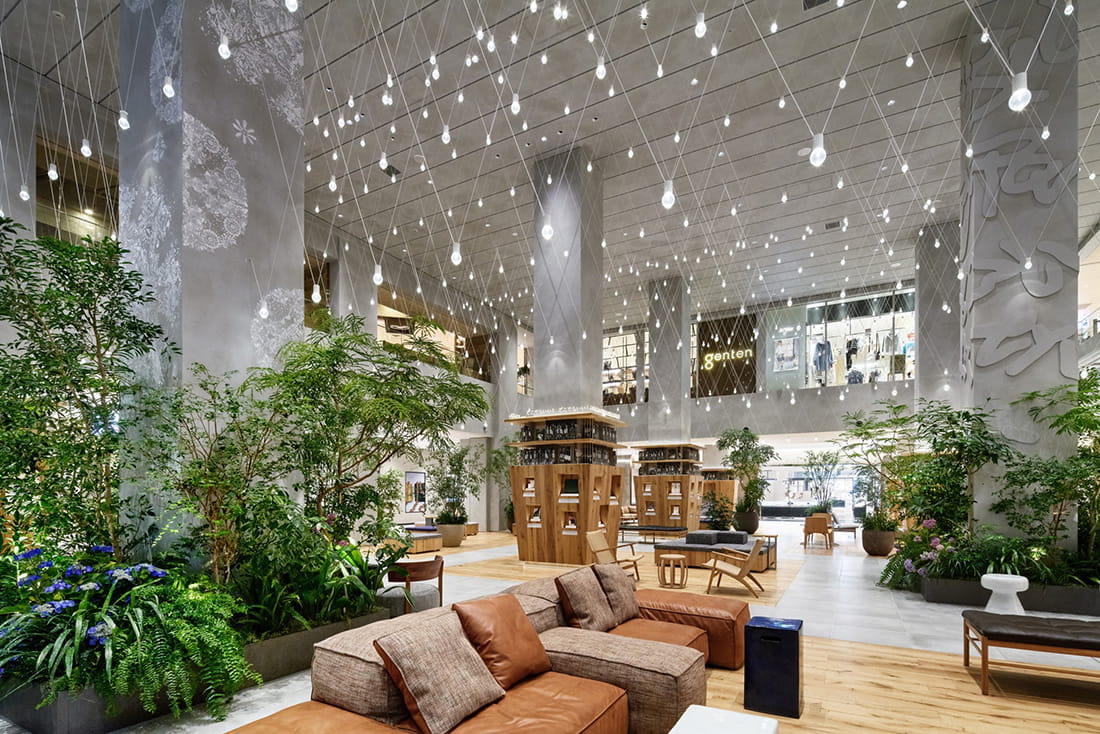

Ideas that expand the possibilities of expression
Nagayama's work on the Tamagawa Takashimaya S.C.’s Grand Patio common area renovation received the highest award for lighting design. She was highly acclaimed for her skillful lighting of the interior.
"Nowadays there's a tendency to create spaces with concealed lighting fixtures. But for Tamagawa Takashimaya S.C. Grand Patio, the design began with the idea that lighting fixtures can be part of the spatial design. The focus was the wires and bulbs, which are generally viewed unfavorably. Adjusting the location of the slender wires allows for the creation of beautiful expressions, and when the light is reflected, it becomes beautiful. The two lines — one for power supply, one for safety — were connected and arranged like a necklace. The development is also a disaster-prevention facility, so the Ministry of Land, Infrastructure, Transport and Tourism set many requirements for the ceiling design. The project was completed by meeting the safety requirements and overcoming structural and technological challenges, while ensuring easy maintenance and cohesive design.”
Nagayama notes that RAYCREA has the potential to expand the possibilities of expression.
"I would say that lighting is the most developed part of architecture because it's now possible to do things that were once impossible, and the range of expression is wider than ever before. RAYCREA can expand the possibilities even further."


